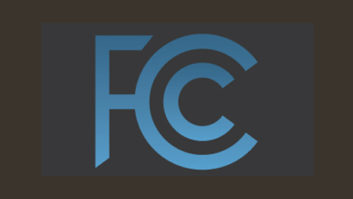Like most engineers, I’m impressed with the scope of product found in the Middle Atlantic Products CD. These guys think of everything.
As data and communications become integral to broadcast facilities, and in order to optimize space and functionality, the company introduced its Rackmount LCD, Keyboard and integrated Touchpad. The RM-KB-LCD15 has a dual-slide rack system, allowing users to monitor the system while minimizing rack space used.
It also has integrated rear articulating cable carriers to provide cable strain relief.
Middle Atlantic Products recently turned 25. It is headquartered in Riverdale, N.J. Check them out at www.middleatlantic.com or call (800) 266-7225.
(click thumbnail)Fig. 1: Painted PVC pipe forms a conduit from the rack to the ceiling.

. . .
In building a new rack room to accommodate a cluster of acquired stations, Nassau New Hampshire DOE Dirk Nadon chose Middle Atlantic equipment racks.
Fig. 1 shows a novel approach to handling wires and cables entering each rack that Dirk and his boss, Nassau Senior VP for Engineering and Technology Tony Gervasi, used.
The PVC pipes are anchored inside the rack, using traditional bracket supports. The pipes were painted black to match the equipment racks. When the room is completed, ceiling tiles will be cut to finish the look. By locating the pipe runs at the edge of each suspended ceiling panel grid, panels can be installed or removed with ease.
I should point out that there is no plenum in this rack room. The room is sealed with its own wall-mounted air conditioner. Use caution about running non-plenum rated cable in ceilings, unless it’s run in conduit. New facilities are likely to be inspected, and the electrical inspector will not be pleased.
Tony chose the Radio Systems StudioHub wiring system to interconnect the studios to the rack room. Here’s a neat twist for multiple stations and EAS. Tony ordered the StudioHub distribution amplifiers, shown in Fig. 2. Each Sage Endec is fed into its own DA, which can be routed pretty much anywhere.
(click thumbnail)Fig. 2: A Radio Systems StudioHub DA routes EAS signals.
(click thumbnail)Fig. 3: Relay of EAS tests is simplified for air staff using a remote control device.
At the Nassau New Hampshire location, operation of the SAGE Endec is simplified through the use of the Sage remote controldevice, seen in Fig. 3 and held by engineer Steve Ordinetz.
Dirk is a good engineering manager. He wanted to make sure his entire staff received credit for the superb job they did with the New Hampshire studios. In addition to Dirk, Tony and Steve, George Bierbaum and Ron Leroux assisted in the construction.


. . .
Art Hadley is with the University of Kansas and does freelance engineering and voice work. He writes with interest about the mention of Neutrik’s solderless XLR connectors in the Dec. 15 Radio World.
Interesting because 11 years ago Art went to Hawaii for the winter to install broadcast and recording studios for the Hawaii State Library for the Blind and Handicapped, a few blocks from Waikiki Beach.
At the time, Radio World had been advertising a quick-assembly, solderless, “no screws” XLR called Jaws. Ads showed a large (Mackie?) mixer being held up by a single audio wire and Jaws connector.
Art saw the ad and bought 300 of the connectors for his studio project. He had about the same results as reported by Jim Schropp with the new connectors: not a single failure, and about 30 to 45 seconds per installation. The only tool needed was a wire stripper (to remove an inch of the outer insulation; the center wires were unstripped).
Art loved these connectors so much that he wrote me and we featured them in Workbench. I believe an Australian company, Alcatel, marketed these through a select number of broadcast distributors. Art recalls that the advertising stopped and the connectors went away. The next time Art wanted some, he couldn’t find them or an equivalent.
Now, finally, there’s something available again: the Neutrik version.
Interesting that it took 10 years before someone else started making such a useful product. It’s too bad Neutrik didn’t just buy the product and process a decade ago.
Art Hadley can be reached at the University of Kansas at [email protected].
. . .
I mention Art’s letter because it points to the purpose of this column: to educate engineers. It could have been written by Jim Schropp’s dad Larry; they run Schropp Technical Services.
As the generations move on, a lot of engineering techniques and tips never change. Often when I talk to engineers about a tip or trick, their reaction is, “Oh, everyone knows about that.” But in so many cases, they don’t.
Enter the Workbench column. If you’ve got an idea or simple tip that you haven’t seen in these pages, send it. If you haven’t sent it in because you think everyone knows about it, send it to me anyway. I’d like to consider it for a future column. Radio World will send a modest honorarium for any contributions we use. If you are SBE-certified, your published tip also will qualify for recertification credit.
You can e-mail your submission to me at [email protected].
. . .
It never hurts to have a contact for “expert” advice in troubleshooting equipment problems. In the world of transmitters, there’s Dave Agnew, Ken Branton, Paul Gregg and Charlie Goodrich.
Longtime readers know how I feel about using a transmitter manufacturer’s tech service: you pay for this service in the price of the transmitter, so you’d better use it. The same is true for other equipment problems. Find a good diagnostic technician, and hold on to that person’s name. You’ll learn a lot from your conversations.
Clay Freinwald, liaison to the SBE for EAS matters, recently received an e-mail requesting help with a problem involving the Sage Endec. Clay referred the matter to Chris Pannell of Harris, who provided the following response: For those who have the Sage Endec, the Harris technician to contact for help is Mike Mills. His phone number is (513) 459-3693. Chris says that he is an expert on diagnosing Sage Endec problems.
Thanks Chris, and Clay, for sharing this information to readers of Workbench.
Submissions for this column are encouraged, and qualify for SBE recertification credit.







